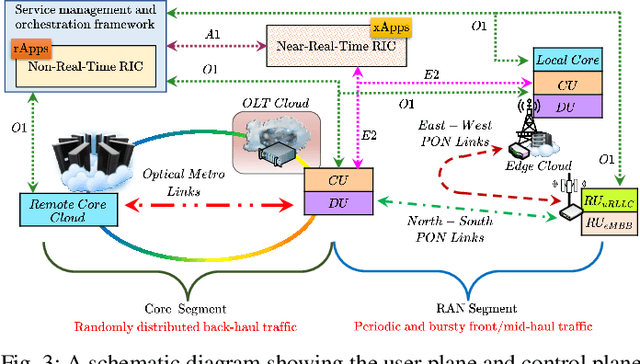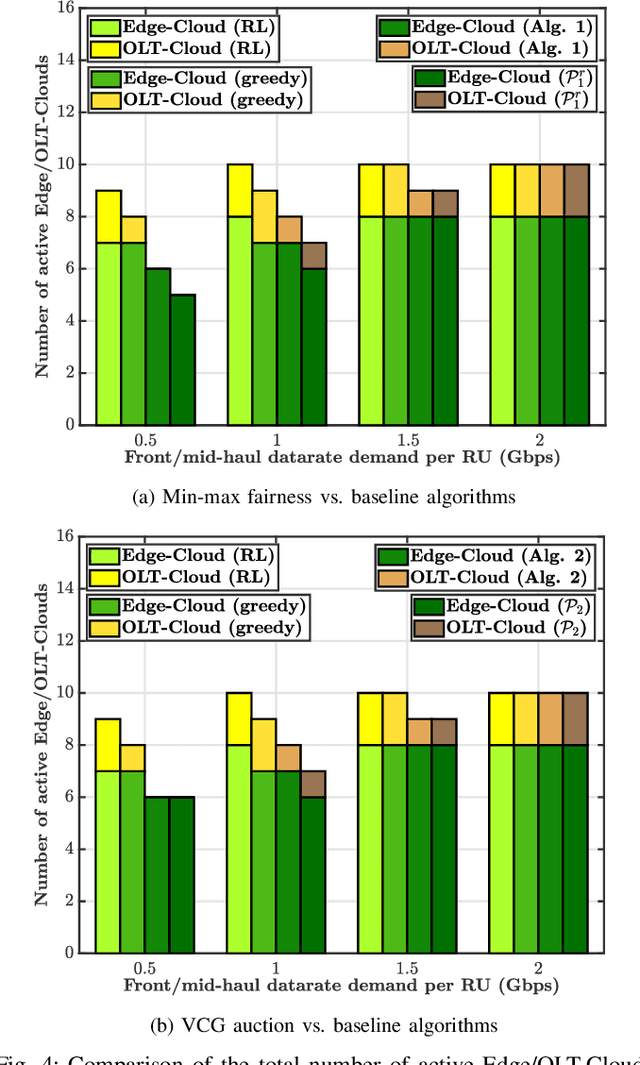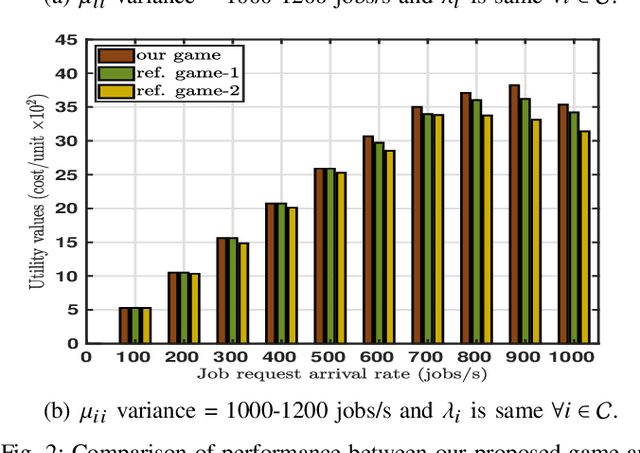Sourav Mondal
Scalable Coordinated Learning for H2M/R Applications over Optical Access Networks (Invited)
Feb 27, 2025Abstract:One of the primary research interests adhering to next-generation fiber-wireless access networks is human-to-machine/robot (H2M/R) collaborative communications facilitating Industry 5.0. This paper discusses scalable H2M/R communications across large geographical distances that also allow rapid onboarding of new machines/robots as $\sim72\%$ training time is saved through global-local coordinated learning.
Fairness Guaranteed and Auction-based x-haul and Cloud Resource Allocation in Multi-tenant O-RANs
Jan 02, 2023



Abstract:The open-radio access network (O-RAN) embraces cloudification and network function virtualization for base-band function processing by dis-aggregated radio units (RUs), distributed units (DUs), and centralized units (CUs). These enable the cloud-RAN vision in full, where multiple mobile network operators (MNOs) can install their proprietary or open RUs, but lease on-demand computational resources for DU-CU functions from commonly available open-clouds via open x-haul interfaces. In this paper, we propose and compare the performances of min-max fairness and Vickrey-Clarke-Groves (VCG) auction-based x-haul and DU-CU resource allocation mechanisms to create a multi-tenant O-RAN ecosystem that is sustainable for small, medium, and large MNOs. The min-max fair approach minimizes the maximum OPEX of RUs through cost-sharing proportional to their demands, whereas the VCG auction-based approach minimizes the total OPEX for all resources utilized while extracting truthful demands from RUs. We consider time-wavelength division multiplexed (TWDM) passive optical network (PON)-based x-haul interfaces where PON virtualization technique is used to flexibly provide optical connections among RUs and edge-clouds at macro-cell RU locations as well as open-clouds at the central office locations. Moreover, we design efficient heuristics that yield significantly better economic efficiency and network resource utilization than conventional greedy resource allocation algorithms and reinforcement learning-based algorithms.
Centralized and Decentralized Non-Cooperative Load-Balancing Games among Competing Cloudlets
May 31, 2020



Abstract:Edge computing servers like cloudlets from different service providers that compensate scarce computational, memory, and energy resources of mobile devices, are distributed across access networks. However, depending on the mobility pattern and dynamically varying computational requirements of associated mobile devices, cloudlets at different parts of the network become either overloaded or under-loaded. Hence, load balancing among neighboring cloudlets appears to be an essential research problem. Nonetheless, the existing load balancing frameworks are unsuitable for low-latency applications. Thus, in this paper, we propose an economic and non-cooperative load balancing game for low-latency applications among neighboring cloudlets, from same as well as different service providers. Firstly, we propose a centralized incentive mechanism to compute the unique Nash equilibrium load balancing strategies of the cloudlets under the supervision of a neutral mediator. With this mechanism, we ensure that the truthful revelation of private information to the mediator is a weakly-dominant strategy for both the under-loaded and overloaded cloudlets. Secondly, we propose a continuous-action reinforcement learning automata-based algorithm, which allows each cloudlet to independently compute the Nash equilibrium in a completely distributed network setting. We critically study the convergence properties of the designed learning algorithm, scaffolding our understanding of the underlying load balancing game for faster convergence. Furthermore, through extensive simulations, we study the impacts of exploration and exploitation on learning accuracy. This is the first study to show the effectiveness of reinforcement learning algorithms for load balancing games among neighboring cloudlets.
 Add to Chrome
Add to Chrome Add to Firefox
Add to Firefox Add to Edge
Add to Edge